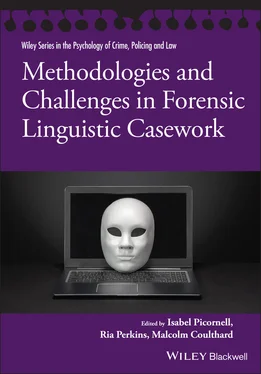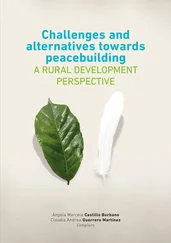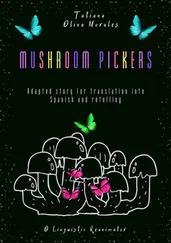Methodologies and Challenges in Forensic Linguistic Casework
Здесь есть возможность читать онлайн «Methodologies and Challenges in Forensic Linguistic Casework» — ознакомительный отрывок электронной книги совершенно бесплатно, а после прочтения отрывка купить полную версию. В некоторых случаях можно слушать аудио, скачать через торрент в формате fb2 и присутствует краткое содержание. Жанр: unrecognised, на английском языке. Описание произведения, (предисловие) а так же отзывы посетителей доступны на портале библиотеки ЛибКат.
- Название:Methodologies and Challenges in Forensic Linguistic Casework
- Автор:
- Жанр:
- Год:неизвестен
- ISBN:нет данных
- Рейтинг книги:3 / 5. Голосов: 1
-
Избранное:Добавить в избранное
- Отзывы:
-
Ваша оценка:
- 60
- 1
- 2
- 3
- 4
- 5
Methodologies and Challenges in Forensic Linguistic Casework: краткое содержание, описание и аннотация
Предлагаем к чтению аннотацию, описание, краткое содержание или предисловие (зависит от того, что написал сам автор книги «Methodologies and Challenges in Forensic Linguistic Casework»). Если вы не нашли необходимую информацию о книге — напишите в комментариях, мы постараемся отыскать её.
Discover more about Forensic Linguistics, a fascinating cross-disciplinary field from an international team of renowned contributors Methodologies and Challenges in Forensic Linguistic Casework
Methodologies and Challenges in Forensic Linguistic Casework — читать онлайн ознакомительный отрывок
Ниже представлен текст книги, разбитый по страницам. Система сохранения места последней прочитанной страницы, позволяет с удобством читать онлайн бесплатно книгу «Methodologies and Challenges in Forensic Linguistic Casework», без необходимости каждый раз заново искать на чём Вы остановились. Поставьте закладку, и сможете в любой момент перейти на страницу, на которой закончили чтение.
Интервал:
Закладка:
The issue of unconscious confirmation bias in all forms of forensic analysis is serious and present and entirely separate from that of an unscrupulous analyst who, regardless of which approach they take, can easily manipulate the results in the direction they choose. It is incumbent on all authorship analysts to consider how bias will affect their judgments and where and whether it can be designed out. A failure to recognize the risks here and a failure to take action to mitigate these risks is a failure of professionalism in our practice.
What we have reported here are just some possible ways to mitigate the risk of bias, and this separation between analyst and case manager along with a careful consideration of the order of analysis, has now been effectively applied to other cases. It is not always easy to do and there is no one correct method. Nonetheless, the approach in the Starbuck case shows how confirmation bias can be mitigated in authorship analysis and how the results can contribute positively to a case outcome. Risks of unconscious confirmation bias can be mitigated but perhaps never avoided altogether.
NOTES
1 1This case is wholly complete in the courts and received wide publicity in the press at the time so real names and details are used.
2 2A register is a variety of language used for a particular purpose or in a particular communicative situation; for the purposes of this paper, we make no principled distinction between the terms “register” and “genre.” A community of practice (sometimes referred to as a speech community) refers to a group of speakers who come to share rules and norms through frequent interaction often around a common purpose.
3 3Confusingly, “validation” in the forensic science literature tends to refer mostly to known error rates in terms of sensitivity, specificity, and accuracy, which in the social science literature are referred to as “reliability”.
4 4There’s an interesting discussion to be had as to whether it is better to have a few longer texts or many complete short texts. Short-form messaging analysis (e.g., SMS, Twitter) can take advantage of the fact that hundreds of complete messages can be collected even if the overall number of words in an analysis may be small (see, e.g., Grant, 2012, for a discussion of such analyses).
5 5An n-gram refers to clusters of, for example, two, three, or four items in length. Thus, word 3-grams from the opening clause of this paragraph are: “JG also took,” “also took a,” “took a second,” and “a second approach”.
FURTHER READING
1 Argamon, S. (2018). Computational forensic authorship analysis: Promises and pitfalls. Language and Law/Linguagem e Direito, 5(2), 7–37.
2 Dror, I.E., Peron, A. E., Hind, S. L., & Charlton, D. (2005). When emotions get the better of us: the effect of contextual top-down processing on matching fingerprints. Applied Cognitive Psychology, 19(6), 799–809.
3 Grant, T. (2020). Text messaging forensics: Txt 4n6: Idiolect free authorship analysis? In M. Coulthard, A. May, & R. Sousa-Silva (eds.), The Routledge Handbook of Forensic Linguistics. (2nd ed.). Routledge.
4 Grant, T. (2012). TXT 4N6: method, consistency, and distinctiveness in the analysis of SMS text messages. Journal of Law & Policy, 21, 467.
5 Grant, T. (2021). The idea of progress in forensic authorship analysis. Cambridge University Press.
6 Grieve, J., & Woodfield, H. (2020). Investigative linguistics. In M. Coulthard, A. May, & R. Sousa-Silva (eds.), The Routledge Handbook of Forensic Linguistics (2nd ed.). Routledge.
SUGGESTED RESEARCH QUESTIONS
The susceptibility of authorship analysis to contextual bias could be explored experimentally. i.e. telling authorship analysts alternative stories around a set problem, and seeing if they come up with different answers. This could be applied to both stylistic and computational approaches to authorship analysis.
It would be useful to explore ways in which computational and more qualitative approaches to authorship analysis might be combined. e.g. using heavily computational methods to elicit a large set of features but to also to examine those features to rule out ones without linguistic explanation.
REFERENCES
1 Argamon, S. (2018). Computational forensic authorship analysis: Promises and pitfalls. Language and Law/Linguagem E Direito, 5(2), 7–37.
2 Biber, D. (1995). Dimensions of register variation. Cambridge University Press.
3 Coulthard, M. (2004). Author identification, idiolect, and linguistic uniqueness. Applied Linguistics, 25(4), 431–447.
4 Dror, I. E., Peron, A. E., Hind, S. L., & Charlton, D. (2005). When emotions get the better of us: The effect of contextual top-down processing on matching fingerprints. Applied Cognitive Psychology, 19(6), 799–809.
5 Dror, I. E., Charlton, D., & Péron, A. E. (2006). Contextual information renders experts vulnerable to making erroneous identifications. Forensic Science International, 156, 74–78.
6 Dror, I. E., & Hampikian, G. (2011). Subjectivity and bias in forensic DNA mixture interpretation. Science & Justice, 51(4), 204–208.
7 Forensic Regulator. (2015). Cognitive bias effects relevant to forensic science examinations. Home Office.
8 Grant, T. (2012). TXT 4N6: Method, consistency, and distinctiveness in the analysis of SMS text messages. Journal of Law & Policy, 21, 467.
9 Grant, T. (2020). Text messaging forensics: Txt 4n6: Idiolect free authorship analysis? In M. Coulthard, A. May, & R. Sousa-Silva (eds.), The Routledge handbook of forensic linguistics (2nd ed.). Routledge.
10 Grant, T., & Baker, K. (2001). Identifying reliable, valid markers of authorship: A response to Chaski. Forensic Linguistics, 8, 66–79.
11 Grant, T., & MacLeod, N. (2020). Language and online identities: The undercover policing of internet sexual crime. Cambridge University Press.
12 Grieve, J. (2007). Quantitative authorship attribution: An evaluation of techniques. Literary and Linguistic Computing 22(3), 251–270.
13 Grieve, J., Clarke, I., Chiang, E., Gideon, H., Heini, A., Nini, A., & Waibel, E. (2019). Attributing the Bixby Letter using n-gram tracing. Digital Scholarship in the Humanities, 34(3), 493–512.
14 Grieve, J., & Woodfield, H. (2020). Investigative linguistics. In M. Coulthard, A. May, & R. Sousa Silva (eds.), The Routledge handbook of forensic linguistics (2nd ed.). Routledge.
15 Luyckx, K., & Daelemans, W. (2011). The effect of author set size and data size in authorship attribution. Literary and Linguistic Computing, 26(1), 35–55.
16 Wagner, S. E. (2012). Age grading in sociolinguistic theory. Language and Linguistics Compass, 6(6), 371–382.
17 Wright, D. (2017). Using word n-grams to identify authors and idiolects: A corpus approach to a forensic linguistic problem. International Journal of Corpus Linguistics, 22(2), 212–241.
Конец ознакомительного фрагмента.
Текст предоставлен ООО «ЛитРес».
Прочитайте эту книгу целиком, купив полную легальную версию на ЛитРес.
Безопасно оплатить книгу можно банковской картой Visa, MasterCard, Maestro, со счета мобильного телефона, с платежного терминала, в салоне МТС или Связной, через PayPal, WebMoney, Яндекс.Деньги, QIWI Кошелек, бонусными картами или другим удобным Вам способом.
Интервал:
Закладка:
Похожие книги на «Methodologies and Challenges in Forensic Linguistic Casework»
Представляем Вашему вниманию похожие книги на «Methodologies and Challenges in Forensic Linguistic Casework» списком для выбора. Мы отобрали схожую по названию и смыслу литературу в надежде предоставить читателям больше вариантов отыскать новые, интересные, ещё непрочитанные произведения.
Обсуждение, отзывы о книге «Methodologies and Challenges in Forensic Linguistic Casework» и просто собственные мнения читателей. Оставьте ваши комментарии, напишите, что Вы думаете о произведении, его смысле или главных героях. Укажите что конкретно понравилось, а что нет, и почему Вы так считаете.











